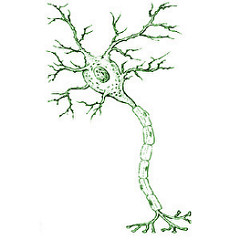Our brains shrink by around 5% every decade after the age of 40, causing memory impairment, especially to the types of memory that associate words with their meanings and store information about when, where, and how memories were stored. It was previously believed that age-related brain shrinkage was caused by the loss of neurons, but a new study conducted by a research team led by Dr. Keith Thulborn, director of MRI research at the University of Illinois at Chicago (UCI) College of Medicine, has discovered that the neurons themselves are shrinking, while neuron density remains constant. The team used a new, special 9.4-Tesla MRI (magnetic resonance imaging) machine that performs scans with magnetic fields three times as powerful as those used in typical clinical MRI machines. This powerful machine allowed the team to detect differences in concentrations of sodium ions outside the neuron membranes, which are pumped into and out of neurons to generate nerve impulses. Sodium ion concentration therefore correlates with neuron density; high sodium concentration indicates large spaces between neurons, while low sodium concentrations indicate tightly packed neurons.
Image Source: PM Images
The study involved using the 9.4-Tesla MRI to scan 49 adults aged 21 to 80 who tested negative for neurodegenerative diseases, had at least a college education, and tested in the normal range for mental status, which is an indication of an individual’s behavioral and cognitive functioning. The results indicated that maintaining neuron density may be the key to protecting against the cognitive impairment that accompanies normal brain shrinkage with age.
According to Dr. Thulborn, “The information provided by these 9.4-Tesla scans may be very useful in helping us to detect tiny losses of brain cells and the reduction in cell density that characterizes the early stages of neurodegenerative diseases that can take decades to develop before symptoms appear, like Alzheimer’s disease” (University of Illinois at Chicago). This information can help test the efficacy of new treatments before the disease develops.
Feature Image Source: Nigel the Neuron by AJC1










